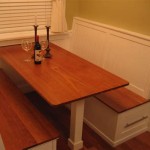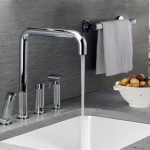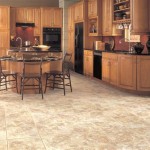How Wide Should Kitchen Island Pendants Be?
Kitchen island pendants are an essential part of any kitchen design, providing both task and ambient lighting to your workspace. But choosing the right size and width for your pendants can be a challenge. Too small, and they'll get lost in the space. Too large, and they'll overpower the kitchen. So, what's the magic number?Determining Pendant Width
The general rule of thumb is that your kitchen island pendants should be between one-third and two-thirds the width of your island. This ensures that they provide adequate lighting without being too overbearing. For example, if your kitchen island is 72 inches wide, your pendants should be between 24 and 48 inches wide. If you have a smaller island, you can go with pendants that are closer to the one-third mark. If you have a larger island, you can go with pendants that are closer to the two-thirds mark.Other Factors to Consider
In addition to the width of your island, you should also consider the following factors when choosing the width of your pendants: *The height of your kitchen ceiling:
If you have a low ceiling, you'll want to choose pendants that are narrower and hang closer to the ceiling. This will prevent them from feeling too oppressive. *The style of your kitchen:
If you have a traditional kitchen, you might want to choose pendants with a more classic shape, such as a globe or a conical pendant. If you have a modern kitchen, you might want to choose pendants with a more contemporary shape, such as a linear or a geometric pendant. *The amount of light you need:
If you need a lot of light in your kitchen, you'll want to choose pendants with a wider shade that can accommodate a larger bulb. If you don't need as much light, you can choose pendants with a narrower shade that can accommodate a smaller bulb.Conclusion
Choosing the right width for your kitchen island pendants is an important part of creating a well-balanced and functional kitchen design. By following the general rule of thumb and considering the other factors discussed in this article, you can choose pendants that are the perfect size for your space.Here are some additional tips for choosing kitchen island pendants:
* Choose pendants that are made from high-quality materials and construction. This will ensure that they last for many years to come. * Consider the finish of your pendants. You want to choose a finish that will complement the rest of your kitchen decor. * Make sure to hang your pendants at the right height. The bottom of the pendants should be about 30 inches above the surface of your island. * Use dimmable bulbs in your pendants. This will allow you to control the amount of light in your kitchen.
How To Choose Kitchen Island Pendant Lighting 1stoplighting

Kitchen Island Lighting How To Get A Perfect Pendant Size Spacing H E I G T Gatheraus

Kitchen Island Lighting How To Get A Perfect Pendant Size Spacing H E I G T Gatheraus

How To Choose Kitchen Island Pendant Lighting 1stoplighting

Kitchen Island Pendant Lighting Size Guide Lightopia

Kitchen Island Lighting How To Get A Perfect Pendant Size Spacing H E I G T Gatheraus

Kitchen Islands Pendant Lights Done Right

Pendant Lights Over A Kitchen Island How Do I It Height Lighting

A Quick Guide To Choosing Kitchen Island Pendant Lighting Bicycle Glass Co

The 5 Main Types Of Kitchen Island Lighting
Related Posts








